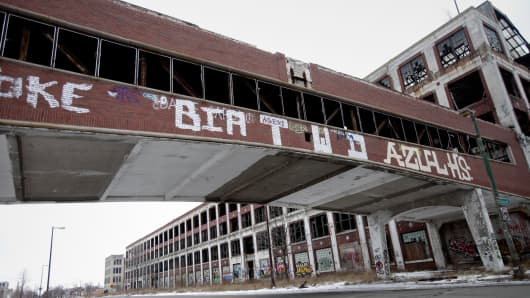Detroit's bid to restructure its debts in bankruptcy court—approved by a federal judge Tuesday—marks the beginning of a painful reckoning after decades of financial mismanagement and economic decline.
But while its bankruptcy filing is an extreme remedy, Detroit's fiscal ailments are being widely felt in cities and states across the country.
On the same day federal Bankruptcy Court Judge Steven Rhodes rendered his historic opinion on Detroit's future, the Illinois legislature ended months of acrimonious debate over how to close a $100 billion pension funding gap that is crippling the finances of the nation's fifth most populous state.
Like Detroit's, Springfield's solution involves cutting benefits for current and future retired state workers, a move expected to save about $160 billion over 30 years and cut the unfunded liability by at least 20 percent, according to Illinois House Speaker Michael Madigan, D-Chicago. State workers will have to work longer to qualify for benefits, and retirees will get smaller cost-of-living increases, among other changes.
"This bill will ensure retirement security for those who have faithfully contributed to the pension systems, end the squeeze on critical education and health-care services, and support economic growth," Gov. Pat Quinn, a Democrat, said in a statement.
Labor unions called the measure unfair and unconstitutional, threatening legal action if Quinn signs it. Detroit's public employee union has also signaled it will appeal Rhodes' decision.
Illinois is not alone. Years of shortchanging its pension funds have left Kentucky, Louisiana, New Jersey, Connecticut, Massachusetts and Hawaii with pension liabilities amounting to more than 100 percent of total state revenues, according to Moody's Investor Service. In nine states—Texas, Colorado, Kansas, North and South Carolina, West Virginia, Pennsylvania, Maryland and Rhode Island—pension liabilities have swollen to more than 80 percent of state revenues.
(Read more: Detroit's next bankruptcy battle: Who foots the bill?)
As in Detroit, playing catch-up with underfunded pensions has become one of the heaviest weights on cash-squeezed local governments, crowding out spending on services and investments in infrastructure. It's also forced smaller cities like Stockton and San Bernardino in California to seek the shelter of bankruptcy court to reorganize their debts.





